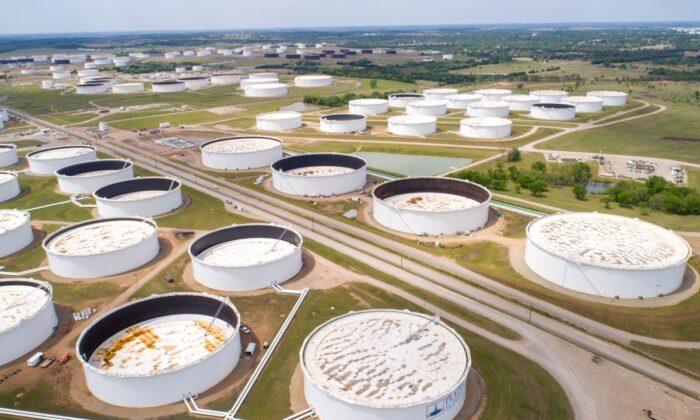LONDON—Oil slipped but held above $75 a barrel on Thursday, within sight of a near seven-week high hit a day earlier, supported by a big drop in U.S. crude inventories and expectations of recovering global demand.
U.S. crude inventories fell by 6.4 million barrels last week, more than analysts expected, as oil facilities offshore were still recovering from Hurricane Ida.
The United States is the world’s largest oil consumer.
Brent crude was down 9 cents, or 0.1 percent, to $75.37 by 0815 GMT. On Wednesday, Brent touched $76.13, its highest since July 30. U.S. West Texas Intermediate (WTI) was down 4 cents at $72.57.
Brent has rallied 46 percent this year, supported by supply cuts by the Organization of the Petroleum Exporting Countries and allies, and some demand recovery from last year’s pandemic-related collapse.
“The recovery from the destruction caused by the coronavirus is genuinely under way,” said Tamas Varga of oil broker PVM. “Generally speaking the world is on the mend.”
Adding to the signs of demand recovery, closely watched reports this week said world oil use will rise above 100 million barrels per day, a level last seen in 2019, as soon as next year’s second quarter.
Oil is also finding support from a surge in European power prices, which have sky-rocketed due to a host of factors including low gas inventories and lower-than-normal gas supply from Russia.
The gas price surge and impact on oil “is a situation that I believe will get much worse before it gets better,” said Jeffrey Halley, analyst at brokerage OANDA.
Weighing on oil were signs of a resumption of recovery efforts in the U.S. Gulf after Hurricane Nicholas, which was downgraded to a tropical depression.
U.S. Gulf energy companies have been able to quickly restore pipeline service and electricity, allowing them to bolster efforts to repair more significant damage from Ida.





